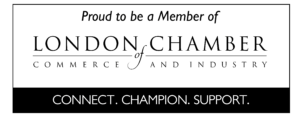Where’s the ‘good knife’?
(or what is brand strategy and what does it do?)
Where’s the good knife? Who used my mug? We all have favourites, right? We may have a draw full of knives but there’s that one that we like using most.
Maybe it’s just a bit sharper – or maybe it feels more comfortable or more balanced in our hand. It’s a personal thing. Like your favourite mug.
Why keep the others around? Just in case! Or, for when the favourite is in the dishwasher maybe but the fact is that some things, some people and some businesses – just ‘sit’ better with us.
Given the choice, we’ll use them. We may have other knives in the draw – just in case – but we have our preference, and given the choice, we’re using that one.
For anyone running a business, it has to be our desire and our drive to hold that position of ‘favourite’ in the minds of our customers. Achieving that position is not easy but that is where good brand strategy comes into play.
People often get confused about branding – they conflate brand and logo, they talk about identity when they are really talking about marketing collateral. So, let me try and define brand strategy.
For me, the brand strategy defines rules and guidelines on how, what, where, when and to whom you communicate your message. It’s the strategy that dictates how your brand will be presented in the marketplace; where you’ll show up, how you’ll sound, and what you’ll look like. It defines whom you’re talking to, how you express yourself and what that target audience can/should expect at every single contact they have with your business. So it encompasses quite a lot.
Going back to the opening analogy. Your favourite knife, became your favourite knife because it feels good in your hand, and you probably like the look of it. But it also delivers to you what it promised. It does the job, does it well, does it consistently – and it feel right when you are working with it.
The same is true for a business. It has to deliver on the promises made, it has to do so consistently, doing the job well and it has to feel right to the user.
Brand strategy is the plans and methodology to connect your brand and your target user. I liken it to building a bridge. You start by making sure you have firm foundations and build towards the middle – towards a true connection. For a business or organisation that means knowing clearly who the target audience is, and also being sure about who you are too.
That assurity gives the business the ability to address the right people in the right way, with the right message, through the right media, at the right time.
Your brand strategy becomes the filter through which every action and interaction is passed.
If all the ways that the business interacts with its potential customers align, and each potential touch-point delivers the same message and creates the same ‘feeling’ within the customer then you are onto a winning formula.
There are physical, tangible expressions of your brand – and they are what most people often focus on: the logo, the website, the marketing – even the social media presence.
But there are lots of intangibles too. If what one of the godfathers of branding, Marty Neumiere, states is true, that “A brand is a person’s gut feeling about a product, service or organisation” – then a brand strategy is how the company, service provider or organisation tries to manage their reputation and customer interactions in the most favourable way.
You can’t tell people you have great customer service if they can’t get through to you on the phone – or when they do the receptionist is rude and unhelpful. The brand expression has to be true and has to be consistent.
There is a reason in the design world that brand guidelines do not generally contain anything about the strategy.
What’s the difference between brand guidelines and brand strategy?
Brand guidelines are a collection of examples and templates to help define the tangible elements – they are designed to be shared with third parties and collaborators to ensure everyone expresses the brand consistently and in-line with the strategy.
The strategy is the thinking behind that expression of the brand and this is usually held very tightly within an organisation – and guarded jealously. Why would you risk potentially leaking your strategy to your competition?
A well-defined brand strategy will identify and leverage your competitive advantage, and could even contain research that highlights your competitors’ weaknesses. That’s worth protecting.
Would you like to be able to hold that position of ‘favourite’ in the minds of your customer? Do you have a brand strategy to get you there? Do all your employees know what that strategy is?
If you can’t answer those questions with a resounding ‘yes’ then it might be time to talk brand strategy with a professional.








Leave a Reply
Want to join the discussion?Feel free to contribute!